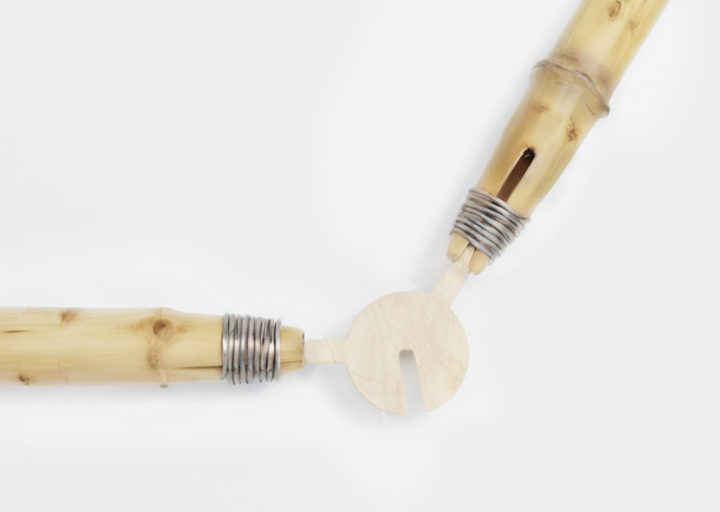BAMBOO BOX
This project introduces a novel bamboo construction method that relies on simple connections, facilitating the production of mass-customizable, low-impact shell structures capable of accommodating a broad spectrum of intricate surface curvatures. The project demonstrates a fabrication process that leverages material behavior, computerized manufacturing, and computational logic to reduce material waste in the production of unique usable space.

This project introduces a novel bamboo construction method that relies on simple connections, facilitating the production of mass-customizable, low-impact shell structures capable of accommodating a broad spectrum of intricate surface curvatures. The project demonstrates a fabrication process that leverages material behavior, computerized manufacturing, and computational logic to reduce material waste in the production of unique usable space.
As computational power and digital tools enable designers to model increasingly complex curves and surfaces, the challenge lies in developing tools and fabrication processes for their physical realization. A crucial aspect of the project is to automate the conversion of easily manipulatable NURBS forms into full fledged structurally optimized dual surface space-frames.
TOOLS AND ASSEMBLY
Due to its organic nature, bamboo is difficult to connect together using typical off the shelf hardware. Inspired by traditional rope lashing techniques, we formulated a system of reliable planar connections that accounts for material inconsistencies.
PROCESS
Utilizing Rhino 3D and Grasshopper, a given input surface is analyzed, optimized, and simulated. A complete organized machining file is then outputted with detailed assembly instructions.
In the box sent to the customer is only the CNC plywood connection nodes, wire for binding the bamboo to the nodes, a custom bamboo splitter tool, and a cut list. The bamboo itself is locally sourced. This allows for an incredibly small and efficient package, ultimately reducing the environmental impact and cost for the customer.
Importantly, the complete on-site assembly is designed to be done without the need for power tools.




